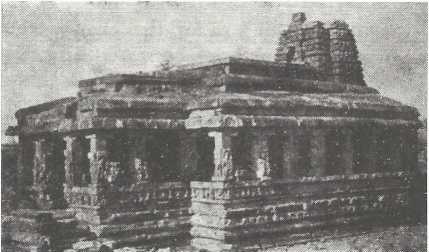Talk:Durgatemple
One of the more ancient group of temples, built out of stone and preserved as archaeological monuments is at Aihole, a small town in the Bijapur district of northern Karnataka. The Durgā temple is a major building of this group. The temple derives its name because it is situated inside a structure that resembles a ‘durga’ or fort and not because it is dedicated to the goddess Durgā. It is assigned to the period A. D. 600 and is of the Cālukyan style. The apsidal plinth resembles Buddhist caitya in architectural style. The vimāna (tower above the main shrine) is of the nāgara type. (See NĀGARA for details.) There is no image of any deity inside the sanctum. There is a passage round it meant for pradakṣiṇā or circu- mambulation. The pillars carrying the roof are rectangular in shape and are of a very simple design. The relief figures etched on the outer walls and on the pillars in the front include: Rāmā and Sitā seated/in a boat navigated by Guha, Siva riding his bull (Nandi), Viṣṇu, Narasimha,
Kaliyuga. Thus, the Dvāparayuga is the third of the four yugas. Its duration is 8,64,0 human years. See YUGAS for details.

